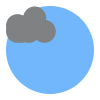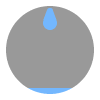Задание №9495.
Чтение. ЕГЭ по английскому
Установите соответствие между заголовками 1 — 8 и текстами A — G. Используйте каждую цифру только один раз. В задании один заголовок лишний.
1. Getting bigger
2. The weather in Paris
3. Why live in Paris?
4. Key facts
5. Becoming stronger
6. Location
7. A rich place
8. The jewel of Paris
A. Paris is the capital city of France. It is situated in the north-central part of the country. People were living on the site of the present-day city, located along the Seine River by about 7600 BC. The modern city has spread far beyond both banks of the Seine. Paris is by far the country’s most important centre of commerce and culture. The area of the city is 41 square miles (105 square km); the population of Paris and its suburbs is approximately 10 million people.
B. For centuries Paris has been one of the world’s most important and attractive cities. It is appreciated for the opportunities it offers for business and commerce, for study, culture, and entertainment; its gastronomy, haute couture, painting, literature, and intellectual community especially enjoy an enviable reputation. It is called the City of Light and it lives up to its reputation being an important centre for education and intellectual pursuits.
C. Paris is situated at a crossroads of both water and land routes significant not only to France but also to Europe. It has had a continuing influence on its growth. Under Roman administration, in the 1st century BC, the original site on the Île de la Cité was designated the capital of the territory. Under King Hugh Capet (ruled 987 – 996), the preeminence of Paris was firmly established, and Paris became a political and cultural hub as modern France took shape.
D. Paris is located on the western side of Europe and in a plain relatively close to the sea. Thanks to the Gulf Stream, it has a fairly temperate climate. The weather can be very changeable, however, especially in the winter and spring, when the wind can be sharp and cold. The annual average temperature is roughly 12 °C; the July average is about 19 °C, and the January average is about 3 °C. The temperature drops below freezing for about a month each year, and snow falls on such days.
E. At the eastern end of the Île de la Cité we can see the cathedral of Notre-Dame de Paris. It is situated on a spot that Parisians have always reserved for the practice of religious rites. Like all cathedrals in France, Notre-Dame is the property of the state, although its operation as a religious institution is left entirely to the Roman Catholic Church. The cathedral looks stunning. It is certainly the most famous landmark in Paris, attracting millions of tourists each year.
F. In 1850, Paris had approximately 600,000 inhabitants. It then grew rapidly as industrial expansion attracted a constant stream of people from the provinces. By 1870, the population had surpassed 1,000,000, and by 1931 the conurbation contained some 5,000,000 people, more than half of them living in the city of Paris, the administrative city within the old gates. After World War II, this growth continued, and in the early 21st century Greater Paris had over 10 million people.
G. Paris is not only the political and cultural capital of France but also its major financial and commercial centre. It is a very wealthy city, home to many vast private fortunes, both of French and foreign origin. It serves as the base for numerous international business concerns, and even if large French firms have their manufacturing plants in the provinces, nearly all keep their headquarters in Paris, conveniently close to major banks and key ministries.
| A | B | C | D | E | F | G |
Решение:
Заголовок 4 (Key facts. — Основные факты) соответствует содержанию текста A: «Paris is the capital city of France. It is situated in…»
Заголовок 3 (Why live in Paris? — Зачем жить в Париже?) соответствует содержанию текста B: «It is appreciated for the opportunities it offers for business and commerce, for study…»
Заголовок 6 (Location. — Место нахождения) соответствует содержанию текста C: «Paris is situated at a crossroads of both water and land routes…»
Заголовок 2 (The weather in Paris. — Погода в Париже) соответствует содержанию текста D: «Thanks to the Gulf Stream, it has a fairly temperate climate.»
Заголовок 8 (The jewel of Paris. — Жемчужина Парижа) соответствует содержанию текста E: «The cathedral looks stunning. It is certainly the most famous landmark in Paris…»
Заголовок 1 (Getting bigger. — Становится больше) соответствует содержанию текста F: «In 1850, Paris had approximately 600,000 inhabitants. It then grew rapidly as industrial expansion…»
Заголовок 7 (A rich place. — Богатое место) соответствует содержанию текста G: «It is a very wealthy city…»
Показать ответ
Источник: ФИПИ. Открытый банк тестовых заданий
Сообщить об ошибке
Тест с похожими заданиями
1) Установите соответствие между заголовками 1 — 8 и текстами A — G. Используйте каждую цифру только один раз. В задании один заголовок лишний.
1. Getting bigger
2. The weather in Paris
3. Why live in Paris?
4. Key facts
5. Becoming stronger
6. Location
7. A rich place
8. The jewel of Paris
A. Paris is the capital city of France. It is situated in the north-central part of the country. People were living on the site of the present-day city, located along the Seine River by about 7600 BC. The modern city has spread far beyond both banks of the Seine. Paris is by far the country’s most important centre of commerce and culture. The area of the city is 41 square miles (105 square km); the population of Paris and its suburbs is approximately 10 million people.
B. For centuries Paris has been one of the world’s most important and attractive cities. It is appreciated for the opportunities it offers for business and commerce, for study, culture, and entertainment; its gastronomy, haute couture, painting, literature, and intellectual community especially enjoy an enviable reputation. It is called the City of Light and it lives up to its reputation being an important centre for education and intellectual pursuits.
C. Paris is situated at a crossroads of both water and land routes significant not only to France but also to Europe. It has had a continuing influence on its growth. Under Roman administration, in the 1st century BC, the original site on the Île de la Cité was designated the capital of the territory. Under King Hugh Capet (ruled 987 – 996), the preeminence of Paris was firmly established, and Paris became a political and cultural hub as modern France took shape.
D. Paris is located on the western side of Europe and in a plain relatively close to the sea. Thanks to the Gulf Stream, it has a fairly temperate climate. The weather can be very changeable, however, especially in the winter and spring, when the wind can be sharp and cold. The annual average temperature is roughly 12 °C; the July average is about 19 °C, and the January average is about 3 °C. The temperature drops below freezing for about a month each year, and snow falls on such days.
E. At the eastern end of the Île de la Cité we can see the cathedral of Notre-Dame de Paris. It is situated on a spot that Parisians have always reserved for the practice of religious rites. Like all cathedrals in France, Notre-Dame is the property of the state, although its operation as a religious institution is left entirely to the Roman Catholic Church. The cathedral looks stunning. It is certainly the most famous landmark in Paris, attracting millions of tourists each year.
F. In 1850, Paris had approximately 600,000 inhabitants. It then grew rapidly as industrial expansion attracted a constant stream of people from the provinces. By 1870, the population had surpassed 1,000,000, and by 1931 the conurbation contained some 5,000,000 people, more than half of them living in the city of Paris, the administrative city within the old gates. After World War II, this growth continued, and in the early 21st century Greater Paris had over 10 million people.
G. Paris is not only the political and cultural capital of France but also its major financial and commercial centre. It is a very wealthy city, home to many vast private fortunes, both of French and foreign origin. It serves as the base for numerous international business concerns, and even if large French firms have their manufacturing plants in the provinces, nearly all keep their headquarters in Paris, conveniently close to major banks and key ministries.
2) Прочитайте текст и заполните пропуски A — F частями предложений, обозначенными цифрами 1 — 7. Одна из частей в списке 1—7 лишняя.
Tourism in Altai
Hundreds of tourists come to Altai every year. The most popular kinds of activities are climbing, snowboarding and hiking around the legendary routes. Cycling, diving, rafting, kayaking, sailing, swimming and fishing are widely enjoyed as well. Many people come there for more passive relaxation, such as spa, and feasting their eyes upon the flower of maralnik, ___ (A), blossoming in spring. Eco tourists are often attracted by collecting healing herbs, horse riding and participating in cultural events, such as the famous “Votetno” in summer, ___ (B).
Tourist season is in the full swing there usually in the summer. And there is no doubt that it is the perfect time for people ___ (C) different activities. In summer, one may do the full scope of season activities, from collecting herbs ___ (D) – all those kinds of hot season entertainment for tourists.
Winter season begins in the region of Altai in December and ends in March. It is the perfect option ___ (E). Winter activities are skating and mountain skiing, riding Russian three horses (“troika”), driving snowmobiles and winter fishing. Everybody will find an entertainment to one’s taste. The most popular city for skiing is Belokurikha.
Another original way of staying in Altai is housekeeping and taking care of one’s own house and animals. It is the best option for those ___ (F) of busy cities.
1. which is a kind of rhododendron
2. for celebrating winter holidays there
3. who prefer peaceful life to the noise
4. who would like to be involved in many
5. to climbing, sailing, rafting and fishing
6. and enjoy many traditional winter sports
7. which is a local festival at the end of July
3) Прочитайте текст и запишите в поле ответа цифру 1, 2, 3 или 4, соответствующую выбранному Вами варианту ответа.
Показать текст. ⇓
What did the girls hope to do that weekend?
1) Have a quiet weekend in.
2) Go to the cinema.
3) Have some more studies that weekend.
4) Talk all the weekend.
4) Прочитайте текст и запишите в поле ответа цифру 1, 2, 3 или 4, соответствующую выбранному Вами варианту ответа.
Показать текст. ⇓
When the girl first met her friend, Lily
1) lived with her parents.
2) visited her grandmother.
3) just came to live in Avon.
4) had just lost her parents.
5) Прочитайте текст и запишите в поле ответа цифру 1, 2, 3 или 4, соответствующую выбранному Вами варианту ответа.
Показать текст. ⇓
Lily was crying when the girl first met her because
1) her grandmother had cut her hair short.
2) she missed her parents.
3) her grandmother didn’t like the way she talked.
4) she had to wear clothes she didn’t like.
6) Прочитайте текст и запишите в поле ответа цифру 1, 2, 3 или 4, соответствующую выбранному Вами варианту ответа.
Показать текст. ⇓
Why did the girl become friends with Lily?
1) She wanted to comfort her.
2) She liked Lily’s dress.
3) She became fascinated with her.
4) They had common problems.
7) Прочитайте текст и запишите в поле ответа цифру 1, 2, 3 или 4, соответствующую выбранному Вами варианту ответа.
Показать текст. ⇓
“We complemented each other well” in paragraph 2 means that they
1) found а common language.
2) were a perfect match.
3) supported each other.
4) liked the same things.
Прочитайте текст и запишите в поле ответа цифру 1, 2, 3 или 4, соответствующую выбранному Вами варианту ответа.
Показать текст. ⇓
Why did Lily have to do some occasional jobs?
1) She had to pay for her studies.
2) She had to support her grandmother.
3) She spent a lot on her clothes.
4) She liked to change jobs.
9) Прочитайте текст и запишите в поле ответа цифру 1, 2, 3 или 4, соответствующую выбранному Вами варианту ответа.
Показать текст. ⇓
The girl “couldn’t wait for the weekend” because she
1) wanted to eat properly at last.
2) wanted Lily to have a break from her studies.
3) needed a rest from her job.
4) needed to get well after a flue infection.
Установите соответствие тем 1 — 8 текстам A — G. Занесите свои ответы в соответствующее поле справа. Используйте каждую цифру только один раз. В задании одна тема лишняя.
1. Comparing insects
2. Some special features
3. Some dragonflies migrate
4. Excellent vision
5. Keeping them warm or cool
6. Masters of flight
7. Ancient insects
8. Risks of extinction
A. Long before the dinosaurs walked the Earth, dragonflies took to the air. If we could transport ourselves back 250 million years, we would immediately recognize the familiar sight of dragonflies flying in pursuit of prey. Ancient dragonflies may have been considerably larger than those we see today. A fossilized impression of a dragonfly wing, found in a coal mine in England, is the oldest known dragonfly specimen. This dragonfly lived 320 million years ago and had a wingspan of 8 inches.
B. Relative to other insects, dragonfly vision is extraordinarily good. The head consists almost entirely of two huge compound eyes, which gives the dragonfly nearly 360° vision. Each compound eye contains as many as 30,000 lenses, or ommatidia. A dragonfly uses about 80% of its brain to process all this visual information. They can see a wider spectrum of colours than humans. This remarkable vision helps them to detect the movement of other insects and avoid collisions in flight.
C. Dragonflies can move each of their four wings independently. In addition to flapping each wing up and down, they can rotate their wings forward and back on”an axis. This flexibility enables them to put on an aerial show like no other insect. Dragonflies can move straight up or down, fly backwards, stop and hover, and make hairpin turns, at full speed or in slow motion. A dragonfly can fly forward at a speed of 100 body lengths per second, or up to 30 miles per hour.
D. A number of dragonfly species are known to migrate. As with other organisms that migrate, dragonflies relocate to follow or find needed resources, or in response to environmental changes like cold weather. The globe skimmer is one of several species known to develop in temporary freshwater pools. Forced to follow the rains that replenish their breeding sites, the globe skimmer set a new insect world record when a biologist documented its 11,000 mile trip between India and Africa.
E. Fifty years ago there were twice as many ponds in Britain as there are today. The draining of agricultural land, «filling in and pollution have all contributed to the disappearance of most countryside ponds. Canals have also suffered from pollution, especially by chemicals used on farmland draining into water. The loss of suitable fresh water habitats has affected dragonflies enormously and they are becoming increasingly rare. Some of dragonflies which can be found living only in the Norfolk Broads, is on the list of British endangered species of insects.
F. A dragonfly has two large compound eyes which take up most of its head. Dragonflies have long, delicate, membranous wings which are transparent and some have light yellow colouring near the tips. Their bodies are long and slender and they have short antennae. Dragonflies are very colourful. Some are red like the Comet Darner and yellow like the Emerald Darner. They can beat each pairs of wings together or separately and their rear wings can be out of phase with the front wings. Their wing beat is around 50-90 beats per second.
G. Dragonflies and butterflies possess two pair of wings. The butterfly’s wings are made up of two large pairs of wings each possessing a forewing and a hindwing. Butterflies can’t fly if the temperature of their body falls below 8″5 degrees and therefore need to sun themselves in order to warm up. Butterflies also have a pair of antennae with small receptors attached for smelling. Dragonflies have two pairs of wings that are transparent, rigid, straight, and have few veins. Unlike butterflies, dragonflies are adept at flying.
-
11
11°C max day temperature
- 4 hours of sunshine per day
-
16
16 days with some rainfall
-
4
4°C min night temperature
-
12
12 hours of daylight per day
-
0
No heat & humidity
-
52
52 mm of monthly rainfall
-
3
3 (Moderate) UV index
- Save £50 per person on ALL holidays in 2022/2023
- £60 low deposits & free child places available
- Travel before 31st October 2023 (inclusive)
 Jet2holidays deal finder
Jet2holidays deal finder
Recommended for France
The March weather guide for France (Paris) shows long term weather averages processed from data supplied by CRU (University of East Anglia), the Met Office & the Netherlands Meteorological Institute. Find out more about our data sources.
Jan
Feb
Mar
Apr
May
Jun
Jul
Aug
Sep
Oct
Nov
Dec
Metric (°C / mm) | Imperial (°F / inches)
Back to top
More about France
How warm is it in Paris in March?
Daytime temperatures usually reach 11°C in Paris in March, falling to 4°C at night.
How sunny is it in Paris in March?
There are normally 4 hours of bright sunshine each day in Paris in March — that’s 35% of daylight hours.
Does it rain in Paris in March?
There are usually 16 days with some rain in Paris in March and the average monthly rainfall is 52mm.
Paris March sunrise & sunset times
Browse the sunrise and sunset times for Paris in March 2023. Select a month to view Paris sunrise and sunset times for the next 12 months.
JanFebMarAprMayJunJulAugSepOctNovDec
Be inspired
Get your weekly fix of holiday inspiration from some of the world’s best travel writers plus save on your next trip with the latest exclusive offers
We promise not to share your details
Related posts
Popular travel offers
Top ^
*affiliate links: find out how we are funded and why this helps us remain free to use.
Weather forecast for the next 9 days
-
Maximum minimum temperature:12°/12°
Precipitation 0mm
Wind:4m/s
-
Maximum minimum temperature:17°/6°
Precipitation 0.5mm
Wind:4m/s
-
-
Maximum minimum temperature:17°/6°
Precipitation 0mm
Wind:5m/s
-
-
Maximum minimum temperature:18°/6°
Precipitation 0mm
Wind:5m/s
-
-
Maximum minimum temperature:20°/7°
Precipitation 1.9mm
Wind:4m/s
-
-
Maximum minimum temperature:19°/11°
Precipitation 9.1mm
Wind:4m/s
-
-
Maximum minimum temperature:13°/10°
Precipitation 18mm
Wind:9m/s
-
-
Maximum minimum temperature:15°/10°
Precipitation 7.2mm
Wind:7m/s
-
-
Maximum minimum temperature:17°/8°
Precipitation 1.9mm
Wind:3m/s
-
What is the weather in Paris, France for today, tomorrow and beyond?
Looking at the weather in Paris, France over the week, the maximum temperature will be 19℃ (or 67℉) on Friday 22nd April at around 1 pm. In the same week the minimum temperature will be 9℃ or 47℉ on Thursday 21st April at around 6 am.
The national weather service for Paris, France is reporting Friday 22nd April to be the wettest day in the coming week with around 6.20mm or 0.2 inches of rainfall. Make sure to carry an umbrella if you are out and about in Paris, France.
The windiest of all days will be Saturday 23rd April as wind will reach 13mph or 21kmph at around 4 pm.
Best months to visit Paris?
June and July are the best month to go for holiday or travel to Paris. In these month temperature is at around 22°c and average of 281.4615 hours of sunshine in a month.
Coldest months of Paris?
January and February are the coldest months with temperature at around 2°c.
Which months receive most rainfall in Paris?
June and December receive most rainfall with precipitation count of 91.85mm.
Travelling to Paris? Check out our Weather averages of Paris to better plan your holiday or travel.
If you would just like to know what the weather was for a past dates for research or education or you are just curious then visit our historical weather of Paris section.
Paris Holiday Weather
Paris climate is unpredictable. It sees warm summers and cold winters. In summer temperature goes to mid 20s and in winter it may dip to 1°C. The rainfall is moderate and steady year round.
Find out more about Paris or view more top holiday destinations.
Paris is known worldwide as a city of love, romance and culture. One of the world’s top tourist destinations, it has plenty to offer travellers at any time of the year.
You can find hotels and bed & breakfast to suit the budget of all. Hotels range from ?50 to ?300 per night. There are many online deals which give you flight and hotel deals combined. There is stiff competition and finding a good place at right price is not too difficult.
You can find all sorts of food. You can find Asian, Mexican, French, etc. Sea food is excellent and do try ice creams of different style and flavors. Eating is cheap and Paris is full of good quality restaurants and even take aways.
Paris main airport is Roissy-Charles de Gaulle Airport (CDG). It is located approximately 22 km northeast of the city. There are 3 terminals:-
- CDG 1 — International flights
- CDG 2 — National and International flights
- T9 — Used for charter flights only. national and international.
Another airport is Paris-Orly Airport (ORY) which is 14km south of the city, on the A6 motorway.It has 2 terminals:-
- Orly Sud — For international flights
- Orly Ouest — For domestic flights
Both the airports are managed by Aéroports de Paris (ADP) (www.adp.fr).
Citizens of European Union do not require visa to visit France.
Visit French Consulate page for visa requirements: http://www.diplomatie.gouv.fr/en/espaces_dedies.php3?id_rubrique=2045
Paris is well connected with the rail link. The National Railway Service (SNCF) is the fastest, efficient and a reliable rail service. (tel: 0892 353 535; www.sncf.com) is the national railway service, which is fast, efficient and generally reliable.
You can buy tickets at any railway station, or through travel agents. The most popular method is to reserve online or by phone. This allows you to pick up your tickets from the station or even get it delivered to your home.
There are 6 major railway stations in Paris:-
- Gare d’Austerlitz: Central and south-west France and Spain
- Gare de l’Est Alsace: Champagne and southern Germany
- Gare de Lyon: Burgundy, the Alps, Provence and Italy
- Gare Montparnasse: West France, Brittany, Bordeaux, the south-west
- Gare du Nord: Eurostar, Channel ports, north-east France, Belgium and Holland
- Gare St-Lazare: Normandy
If you are looking to visit Disneyland Paris then do check out the Eurostar rail service. The Eurostar runs to Gare du Nord terminus for easy access to Disneyland Paris. Eurostar covers the Thalys’ services from Brussels Bruxelles-Midi and also London.
The buses in Paris are modern, fares are cheap and is also one of the best medium to travel and see Paris. The buses hits the road from early morning at 6.30am and runs till midnight (timings may have changed since this guide was created). As anywhere the bus services are limited on weekends and public holidays. The bus ticket costs approximately ?1.60. You can also use your metro or a travel pass.
Paris is well connected with its state of the art Metro system, which allows people to move around easily and quickly. One of the first thing to know about Paris is to take a memorable cruise on the River Seine. The whole cruise lasts for about 30 — 45min and takes you on a open boat for a ride across Paris. It is a wonderful experience for anyone visiting Paris and wants to know about the culture, monuments and people.
Another historic place to visit is Eiffel Tower. Try to keep a day for Eiffel Tower as it has so much to offer in terms of viewing and also being such a tall building you need to be in good health to climb at the top. There is a lift available which would take you to the top of Eiffel Tower.
If you have kids so must go to Disneyland Paris. It is a magical place and kids will enjoy a lot. Again do keep at least 2 day for here. It is big and with kids you need to have time and stamina to see all. Try to be there in the morning as it gets very busy during the day and do book your ticket in advance.
The other places to visit are:-
- Marais district
- Place des Vosges
- Grande Arche de la Défense
- Centre Georges Pompidou
- Arc de Triomphe
- Champs-Elysées
- Parc Astérix and the Palace of Versailles
Facts
- Country: France
- Area: Approximately 105 square kilometres / 41 square miles
- Language: French
- Time Zone: GMT / UTC +1
- Country dialling code: +33
- Telephone area code: 01
- Religion: Predominantly Catholic
- Tourism: 20 million visitors annually
- Layout: Consists of 20 Arrondissements (Districts)
Best time to visit Paris?
The best time to visit is mid June to August.
The Weather in Paris
Paris has a temperate climate which will be familiar to visitors from the UK and most of the north of Western Europe. Because there are no extremes of climate, the weather adds to the city’s charm, rather than detracting from it. Even rainy days can be beautiful in the city of light, especially at night when the lights reflect in the puddles.
Spring in Paris
Paris is famously beautiful in the spring, and the sprouting greenery, blossoms and flowers bring the city to life between March and May. Temperatures in the spring months climb to a comfortable 20°C by May, but nights can still be chilly in early spring, so bring a jacket and a sweater. You can expect rain roughly 1 day in 3 during the spring, but it’s not torrential by any means.
Spring in Paris is a fantastic time to check out the city’s beautiful gardens and parks, or to indulge in leisurely, romantic strolls. It can be quite crowded at this time of year, however, and you’ll find hotels expensive in the spring season.
Summer in Paris
June is a popular month to visit Paris, but most Parisians escape the city in July and August, which can lead to a rather false, touristy feel to the city. The weather is usually warm and sunny, with average day time temperatures of around 25°C, and rain roughly 1 in 5 days. Take an umbrella, since the rainy days are rather unpredictable.
If you want to see Paris at its bustling height, then this is the time to visit. Pavement cafés are packed and thriving, but queues at museums and attractions can be long and tedious. It’s also high season for the prices, and since Paris is not a cheap city at the best of times, this can be a costly time of year to visit.
Autumn in Paris
If you’re in search of the authentic Paris, autumn is a very good time to visit. There are fewer tourists, and a real sense of energy as Parisians get back to business after their summer breaks. The autumn weather in Paris can be overcast, wet and windy, but there are also plenty of cool, crisp days which are perfect for walking.
When the weather’s not great, it’s a good time to explore the multitude of indoor attractions Paris has to offer — but be aware that some museums close or have limited opening hours out of season.
Winter in Paris
Parisian winters are cold and wet, so pack a good coat and an umbrella. It rarely falls below freezing during the day, but occasional snow can give a whole new romantic appeal to the architecture and sights of the city.
In December, the festive lights offer a beautiful backdrop to the crispness of the city, and there are a good number of festivals and events in the winter months. It’s also the cheapest time to visit Paris, and the least crowded. Yes, it can be dark at times and a little gloomy, with short days, but you’ll see this beautiful city through new eyes.
What to pack for Paris?
In summer time a cotton T-shirt and a trouser is fine. In sunlight it does feel a lot warmer. Do keep yourself protected with suncream and drink lot of water. In winter you need to have wool or leather jacket with layers of clothing inside.
Click on map below to get weather for any location

Weather charts displays the temperature, precipitation, pressure, wind speed and gust for next 14 days.
Yearly and monthly weather average graphs and data generated using data from 2009 onwards till now.
Beautiful free weather widgets for your website and blogs like WordPress, Drupal or Joomla.
Find out how weather changed for past 10+ years in the weather history section and buy data for your requirement.
Weather videos updated daily for continents and locations around the globe.
Best travel deals for Paris in association with
-
(I/interested
in football)
_I’m
interested in football. -
(I
/hungry)
I
______ -
(it/warm
today) It ____________
today. -
(Rome/in
Spain) Rome
______ -
(I/afraid
of dogs)
I
______ -
(my
hands/cold) My
______ -
(Canada/a
very big country) ______ -
(the
Amazon/in
Africa)
______ -
(diamonds/cheap)
______
-
Write
questions from these words. Use
am/Is/are.
-
(your
mother at home?) _Is
your mother at home? -
(your
parents at home?) __________at home? -
(this
hotel expensive?) __________? -
(you
interested in art?) __________? -
(the shops open today?)
__________? -
(the park
open today?) __________?
-
Write
questions with What/Who/How/Where/Why
…? Use am/is/are.
-
(what
colour your car?) What
colour is your car? -
(where my key?) Where ______?
-
(where my
socks?) __________? -
(how old your father?) How
__________? -
(what colour his eyes?)
__________? -
(why John angry with me?)
__________? -
(how
much these shoes?) __________? -
(who your
favourite actor?) __________? -
(why you always late?)
__________?
-
Write
positive or negative short answers (Yes,
I am/No, he isn‘t
etc.).
-
Are you married? _No, I’m not.
-
Are you tall? _Yes, I’m._
-
Is it cold today? __________
-
Are you
a teacher? __________ -
Are you
tired? __________ -
Is it dark
now? __________ -
Are your
hands cold? __________ -
Are you hungry? __________
-
Is your
father tall? __________ -
Is it sunny? __________
Raymond
Murphy. Essential Grammar in Use.
The Present Simple Tense
Is used to talk about:
-
repeated actions or habits
Every evening my parents
stay at home and watch TV.
-
permanent situations
Mr and Mrs Smith live in
Bristol.
-
general truth
The
river
Amazon
flows into the Atlantic Ocean.
Positive forms
I
You
We live in Moscow.
They
He plays the
guitar.
She studies Computer
Science.
It goes very well.
Exercise
1. Complete
the sentences with the correct form of the verbs in brackets.
-
I
________
to bed at 11.00 p.m. (go) -
Jack
________ fluent
French. (speak) -
Her
children _________
game
shows and cartoons. (enjoy) -
She
_______ always funny
jokes. (tell) -
My
sister and I often _______
to
read newspapers in English. (try) -
People_______ personal
computers at home. (use) -
It
_______
him about half an hour to get home from college. (take)
Negative forms
I
You
We do not study at
school. (do not = don’t)
They
He
She does not work on
Sundays (does not = doesn’t)
It
Exercise
2. Write
positive sentences with the verb in the correct form.
Example:
I
don’t
go to school. — I go to school.
-
My mother doesn’t come from
Russia. -
My friends don’t live in
Moscow. -
Paul
Simon doesn‘t
study at Trinity College. -
My
father doesn‘t
work as an engineer. -
My
friends and I don’t go to the cinema at weekends. -
My
friend doesn‘t
wear jeans and a T-shirt to the institute.
Exercise
3. Write
negative sentences with the verb in the correct form.
Example:
I ____to
the radio in the morning. (listen) — I don’t
listen to the radio in the morning.
-
I ___ the dog for a walk
every day. (take) -
She ___ all the food in the
nearest supermarket. (buy) -
We ___ to football matches
every Sunday. (go) -
This car ___ much money —
it’s rather old. (cost) -
My friends ___ in a bank.
(work) -
Pete ___ early at weekends.
(get up)
Exercise
4. Write
true sentences with the given words.
Example: A
child/need
love, food, care and toys. — A child needs love, food, care and
toys.
A child/need a driver’s
license. — A child doesn’t need a driver’s license.
-
A restaurant / sell shoes.
-
A restaurant / serve food.
-
An architect / design
buildings. -
Doctors / take care of sick
people. -
The river Amazon / flow into
the Pacific Ocean. -
Glass / break easily.
-
Scientists / have all the
answers to the mysteries of the universe.
Exercise
5. Write
positive or negative sentences with the verb in brackets in the
correct form.
Example: Children
___ lot of questions. (ask) — Children ask a lot of questions.
I
___ Turkish. (not/speak) — I
don’t
speak Turkish.
-
I
___ hard
rock. (love) -
He ___ to work when the
weather is good. (not / drive) -
You usually ___ my birthday.
(forget) -
The village shop ___ at 10
o’clock in the morning. (not / open) -
We seldom ____ letters to our
old school friends. (write) -
The planets ___ around the
Sun. (go) -
My father
and I ___ television
most evenings. (not / watch)
Соседние файлы в предмете [НЕСОРТИРОВАННОЕ]
- #
- #
- #
- #
- #
- #
- #
- #
- #
- #
- #








 Jet2holidays deal finder
Jet2holidays deal finder









